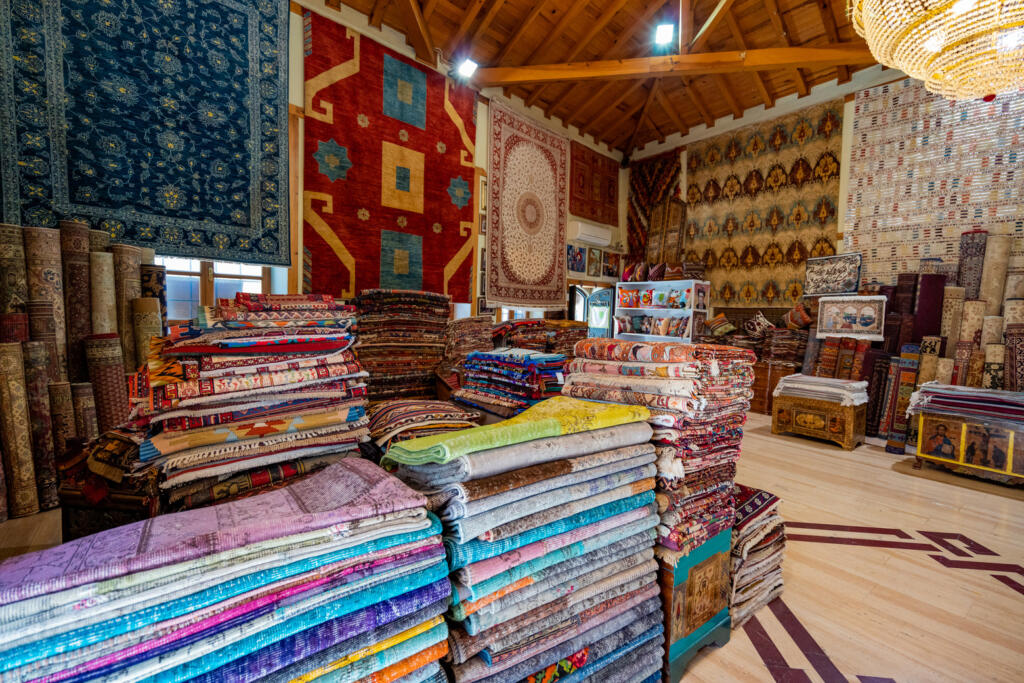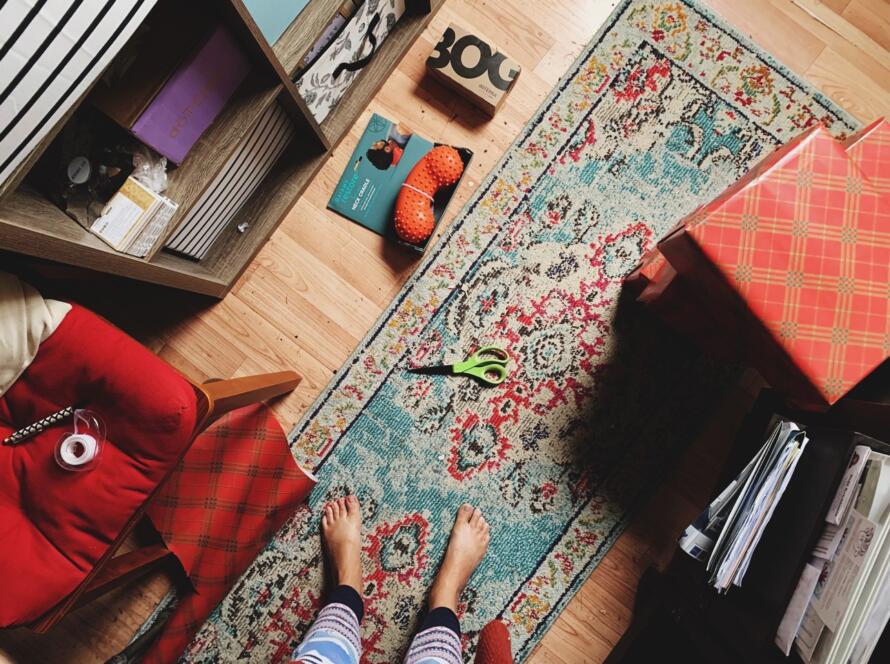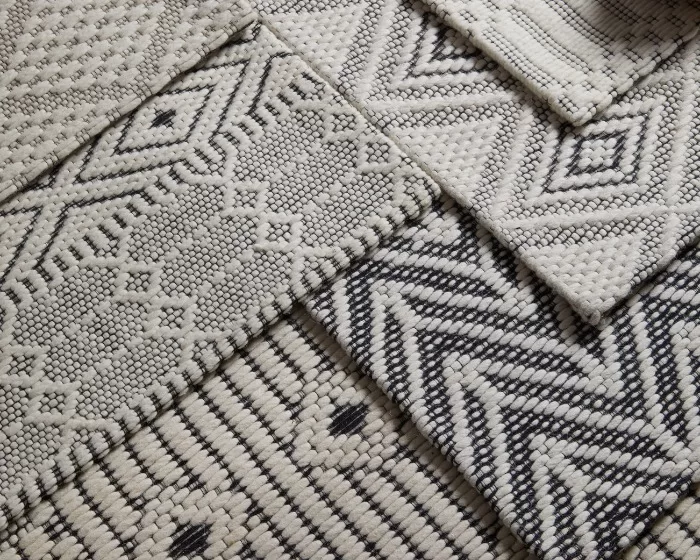Carpet design trends for 2024 reflect an exciting evolution in aesthetics, textures, and sustainability. Homeowners and designers alike are increasingly drawn to styles that combine functionality with artistry, resulting in carpets that enhance both comfort and visual appeal. As consumers seek unique statements in their interiors, the range of available designs has expanded, incorporating modern patterns and eco-friendly materials.
Among the popular styles are bold geometric patterns, which offer a contemporary look, and plush textures that create an inviting atmosphere. Traditional designs continue to hold their charm, while new innovations in manufacturing allow for a stunning variety of colors and prints. This year’s trends emphasize personalization, allowing individuals to express their style through custom designs and unique materials.
With an emphasis on eco-consciousness, many brands are now prioritizing sustainable practices in carpet production. This shift not only contributes to environmental protection but also appeals to a growing demographic that values responsible consumption. Understanding these evolving trends can help anyone create a space that is stylish, comfortable, and aligned with modern values.
Historical Evolution of Carpet Design
Carpet design has transformed significantly over the centuries. The journey of these textiles reflects changes in culture, technology, and aesthetic preferences. Various patterns and motifs have emerged, while modern innovations continue to shape the industry today.
Classic Patterns and Motifs
Classic carpet designs are steeped in rich history, often rooted in specific regions and cultures. Persian carpets, for instance, showcase intricate floral patterns and geometric shapes, iconic of their origin.
Other notable styles include Turkish kilims, characterized by their flatweave technique and bold colors, and Aubusson rugs from France, known for their pastoral scenes.
These designs not only serve as decorative pieces but also convey cultural narratives and artisanal craftsmanship. The repeating motifs often symbolize protection and beauty, making them timeless investments in interior decor.
Modern Trends in Carpet Design
Modern carpet design has witnessed a shift toward minimalism and functionality. Influenced by contemporary art and interior styles, lines have become cleaner, and colors more subdued.
Geometric patterns and abstract designs have gained popularity, particularly among younger homeowners. Additionally, eco-friendly materials, such as recycled fibers, are now common.
Carpet tiles, allowing for versatility in layouts, have also become a trend. These elements reflect a growing desire for personalization and sustainability in home decor.
Influence of Technology on Design Varieties
Advancements in technology have revolutionized carpet manufacturing. Digital printing techniques allow for the creation of intricate designs that were once labor-intensive and costly.
As a result, designers can experiment with bold colors and unconventional patterns. This flexibility has led to an increase in custom options, catering to diverse consumer preferences.
Moreover, technologies such as 3D modeling enable designers to visualize spaces more effectively, enhancing the overall design process. The impact of technology has made stylish carpets accessible to a broader audience while maintaining quality and durability.
Materials and Durability
The choice of materials significantly impacts the durability and longevity of carpets. Different fibers offer various benefits and drawbacks, making it essential to understand how each type performs under different conditions.
Natural vs Synthetic Fibers
Natural fibers such as wool, cotton, and silk provide luxurious textures and a classic appeal. Wool, known for its resilience, can last for 10 to 20 years if properly maintained. It naturally resists stains and does not fade easily. Silk offers elegance but is less durable, often lasting around 5 to 10 years with careful use.
Synthetic fibers like nylon, polyester, and polypropylene are engineered for durability. Nylon is particularly robust, capable of lasting up to 15 years. It’s stain-resistant and maintains its color well, making it a popular choice for high-traffic areas. Polyester provides a softer feel and is easier to clean, typically lasting around 5 to 10 years.
Longevity of Different Rug Types
The lifespan of rugs can vary significantly based on their material and construction. High-quality handmade rugs often have an average lifespan of 20 years or more, especially if maintained regularly. Tufted rugs, while luxurious in appearance, may only last about 5 to 10 years due to their construction method.
Performance rugs designed for high-traffic areas can also last between 10 to 20 years. They are made from durable synthetic materials and are easier to clean. Ultimately, proper care and cleaning are crucial in determining the longevity of any rug type.
The Emergence of Washable Rugs
Washable rugs have gained popularity, driven by the demand for convenience and longevity. Brands like Shivalika Rugs offer options that withstand frequent washing without losing their vibrant colors or texture. These rugs are typically made from synthetic fibers, designed to resist stains and wear.
Their easy maintenance allows homeowners to extend the lifespan of their rugs significantly. Washable rugs combine style with practicality, making them a smart choice for families and pet owners. Such rugs can last around 5 to 10 years, depending on usage and care, while still looking fresh and new.
Manufacturing Techniques
The manufacturing techniques of carpets vary significantly, impacting quality and texture. This section discusses hand knotted carpets, the softness associated with tufting, and innovations in machine-weaving.
Hand Knotted Carpets
Hand knotted carpets are crafted by skilled artisans using traditional methods. Each knot is tied individually, ensuring minimal spacing and maximum durability. This technique allows for intricate designs and patterns, making them highly sought after.
The process can take months, depending on the size and complexity of the design. Hand knotted carpets are often made from high-quality materials such as wool, silk, or cotton. The investment in these carpets is justified by their longevity and unique craftsmanship.
Advantages include:
- Durability: Can last decades with proper care.
- Customization: Each piece can be tailored to specific design preferences.
Tufting and Its Softness Factor
Tufting is a prevalent manufacturing technique that involves inserting yarn into a backing material, creating a soft texture. The softness of tufted rugs comes from the yarn pile height and density. Typically, they are made from synthetic materials or wool blends, contributing to their comfort.
These rugs are popular for residential settings due to their plush feel underfoot, making them a preferred choice for living rooms and bedrooms. Tufted rugs can be less expensive than hand knotted ones, offering a balance of quality and affordability.
Key attributes include:
- Variety of Styles: Available in numerous colors and patterns.
- Softness Level: Higher pile often translates to greater comfort.
Innovations in Machine-Weaving
Machine-weaving technology continually evolves, allowing for mass production of complex carpet designs. Modern looms can reproduce intricate patterns at a faster pace compared to traditional methods. This results in cost-effective and consistent products.
Faux fur rugs manufactured by companies like Shivalika Rugs leverage machine-weaving techniques to offer a luxurious look without the high price point of genuine fur. Innovations also include environmentally friendly materials that meet consumer demand for sustainable products.
Noteworthy advancements include:
- High Precision: Enhanced accuracy in design replication.
- Efficiency: Reduced production time while maintaining quality.
These manufacturing techniques shape the landscape of carpet design, catering to diverse consumer needs.
Sourcing and Identification of Quality Carpets
Quality carpets are essential for enhancing the aesthetics and functionality of any space. To achieve this, careful sourcing and assessment are necessary.
Evaluating Carpet Wholesalers
Identifying reliable carpet wholesalers is crucial for sourcing quality products. Reputable companies like Shivalika Rugs in India offer a diverse range of carpets crafted from various materials.
When evaluating wholesalers:
- Reputation: Check reviews and ratings from previous customers.
- Product Range: A good wholesaler should provide options in both modern and traditional designs.
- Material Quality: Look for carpets made from durable materials like wool, nylon, or polyester.
Additionally, engaging with the wholesaler can provide insights into their sourcing practices and manufacturing processes, which are essential for assessing carpet quality.
Demystifying Carpet Grades and Uses
Carpet grades play a significant role in determining suitability for different environments. Generally, carpets are categorized into three main grades:
- Residential: Ideal for home use, offering comfort and aesthetic appeal.
- Commercial: Built to withstand heavy foot traffic, suitable for offices and public spaces.
- Luxury: High-end carpets that may feature intricate designs and superior materials.
For home or office use, the best grades usually fall into the residential and commercial categories. When selecting a carpet, consider the following factors:
- Durability: Higher-grade carpets tend to last longer.
- Maintenance: Some fibers are easier to clean than others.
- Underfoot Comfort: Plush carpets provide a softer feel.
Choosing the right carpet grade ensures optimal performance and longevity in the intended environment.

Design Applications in Various Settings
Carpet design varies significantly based on the space it occupies. Key considerations include size, type, and functionality. Different settings demand tailored approaches for optimal aesthetics and practicality.
Selecting the Perfect Size for Living Spaces
Choosing the right rug size for a living room is essential. A smaller rug may create a disjointed feel, while an oversized rug can overwhelm the space.
Common Sizes:
- 5×8 feet: Ideal for small living rooms or under coffee tables.
- 8×10 feet: Suitable for larger seating arrangements.
- 9×12 feet: Best for spacious areas, allowing furniture to sit comfortably on the rug.
For a cohesive look, ensure at least the front legs of sofas and chairs rest on the rug. This approach anchors the furniture and enhances the room’s overall flow.
Carpeting for Commercial Spaces
Choosing carpet for commercial environments, such as hotels, requires careful consideration of durability and maintenance. A manufacturer like Shivalika Rugs offers a variety of options tailored for high-traffic areas.
Key Features to Consider:
- Material: Nylon and polyester are popular due to their resilience.
- Color and Pattern: Dark colors and intricate patterns can hide stains effectively.
- Maintenance Requirements: Products should withstand regular cleaning without wear.
Incorporating carpets can enhance a hotel’s atmosphere while providing sound absorption and comfort for guests. Choosing the right design is critical for creating an inviting and professional ambiance.
Future Outlook
The future of carpet design will be shaped by innovative materials and emerging market trends. Designers are expected to adopt new patterns and fabrics while responding to the demands of environmentally conscious consumers.
Predicting Patterns and Materials for 2025 and Beyond
In the coming years, the carpet industry will likely see a rise in biodegradable materials. Manufacturers are focusing on sustainability, utilizing resources such as recycled fibers and natural dyes.
Geometric patterns and textured weaves are predicted to dominate the design landscape. These trends provide visual interest while satisfying consumer desire for unique home aesthetics. Additionally, advancements in technology enable more intricate printing techniques, allowing for customization.
Anticipated innovations such as smart carpets featuring embedded sensors may also reshape functionality. These options can track foot traffic and adapt to environmental factors, enhancing both comfort and practicality.
Emerging Markets and Design Innovations
Emerging markets, particularly in Asia and Africa, are becoming significant players in the carpet industry. As urbanization accelerates, there is a growing demand for stylish yet affordable flooring options.
Design innovations tailored to these markets will focus on local culture and craftsmanship. Handwoven carpets featuring traditional motifs are gaining popularity, reflecting an appreciation for heritage.
Furthermore, online platforms are facilitating global access to unique carpet designs. Brands are leveraging e-commerce to reach diverse audiences, enabling consumers to explore global trends from their homes.
As these markets evolve, new collaborations between local artisans and international designers may further enrich the tapestry of carpet design.




